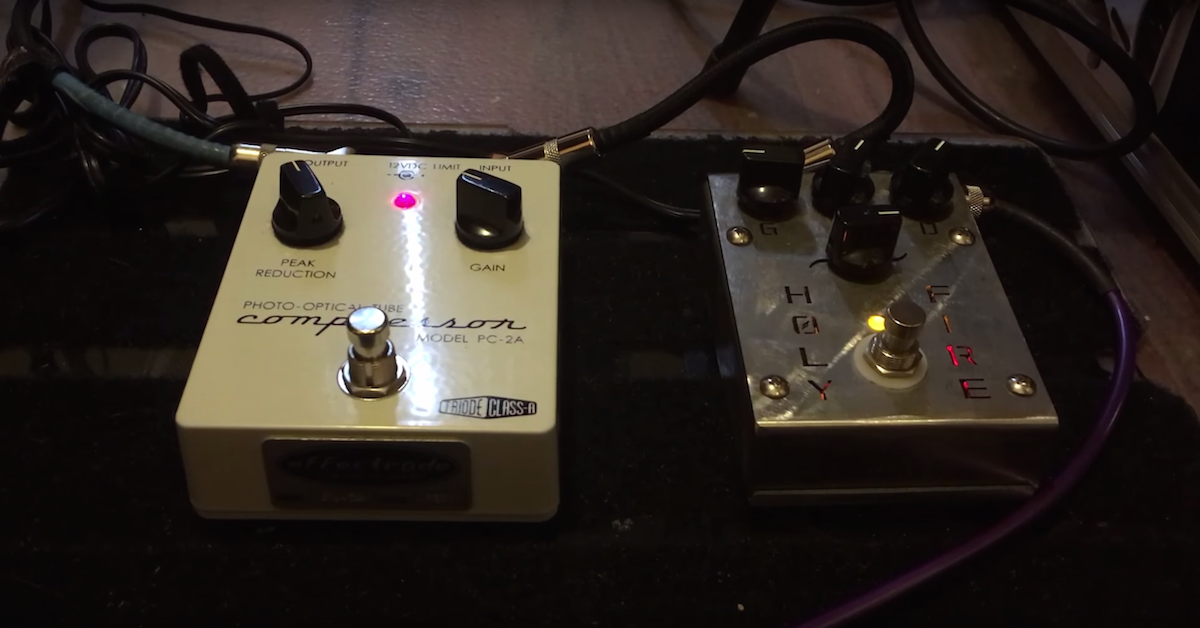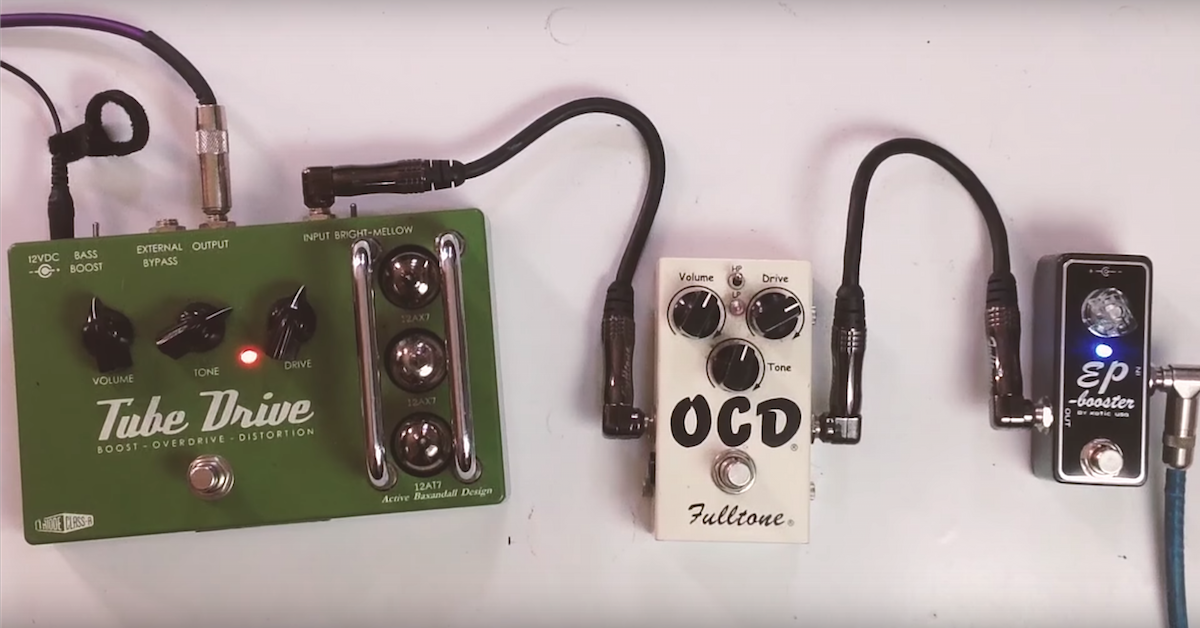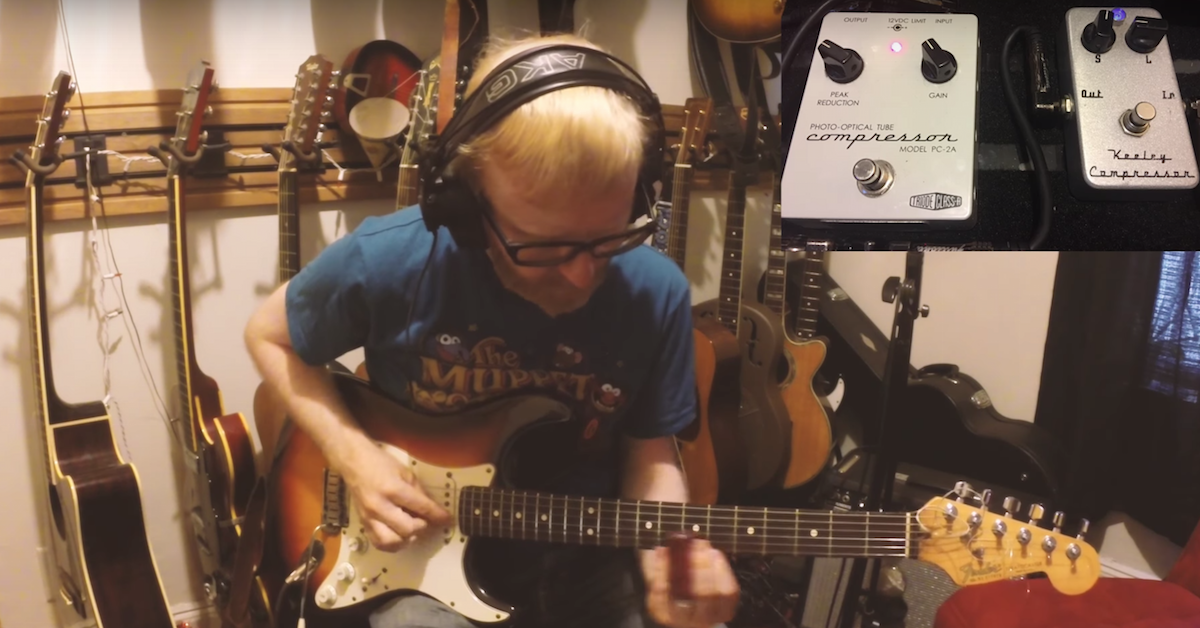Improving DI Guitar Tones: Effectrode Tube Drive + Amp Simulators
But, it’s just not practical. So nowadays, lots of people are using amp sims, and I’m going to talk about some ways I’ve found to improve the quality of the sound of these amp sims.
Now, I’m going to be using Logic, and Logic comes with some built-in amp simulators, and they’re pretty good, actually. They cover all the bases. The tweeds, and some of the British AC-30s and Marshall style amps, but they still don’t really react and sound like a real amp.
So, I’ve found a way to kind of help me get a sound that reminds me a lot more of an actual mic’d cabinet. I’ve been using this effect from Effectrode. Effectrode.com. It’s called the tube driver.
What it is, is a pedal with three tubes in it. One of them is interchangeable, so if you want to mess around with different tubes for different gain staging, you can do that.
Right now, I’m just using the basic stock version of the pedal, and I actually prefer this sound to using anything like a Palmer box with an amp head. I find that this actually sounds a little bit more authentic than those options.
So basically, what I have set up here, as I’m using a barebones rig, a guitar right into this Tube Drive, and right into an Avid M-Box. From there, it’s just going to go into the software, but what I’m trying to do is I’m trying to use the amp sims in Logic just like I would a real amp head, and the guitar pedal is acting like a tube preamp, and it gives me all those glassy tones and the rich low-end growl that you’d expect from a tube amp.
I’m going to start out using this Vox setting on this amp here. I haven’t changed anything. I’ve left all the dials where they are. Let’s hear what it sounds like.
[electric guitar through Vox emulation]
I’m going to switch amps here. I’m going to go with a Tweed style amp. This one, we’re going to pull up again is pretty much the stock settings, but I switched the cabinet to a 12, and I think I pulled the microphone back a little bit. I often like a little bit more space when I’m doing these vintage type rock sounds.
[electric guitar through Tweed emulation]
Let’s switch it out now. I’m going to use a Marshall type sound. I believe the idea behind this amp is kind of like a vintage Plexi.
[playing guitar through Marshall emulation]
I didn’t touch anything on this, so the speaker right now has a condenser emulation on the speaker. I might swap this out for a 57 sometimes. Just try some different mics and positioning.
[guitar through Marshall emulation]
One thing that’s great about this pedal is that it’s very sensitive to where I’m moving my volume knob.
[playing guitar, adjusting volume knob]
I’m going to ride up the drive knob a little bit on this Marshall sound.
[playing guitar through Marshall emulation, more drive]
You might be wondering why you couldn’t just use some of the tube styled emulation plug-ins that we have inside Logic because there are a bunch of them. My issue generally with it, for instance, like this Double Dragon and a lot of the other stompbox emulations, is even if you put them before the amp sim, they’re still real buzzy and kind of blurry. There’s a blurriness to them that a real tube amp doesn’t have.
I’m going to run you through this Effectrode Tube Drive pedal. You can check them out at www.effectrode.com





